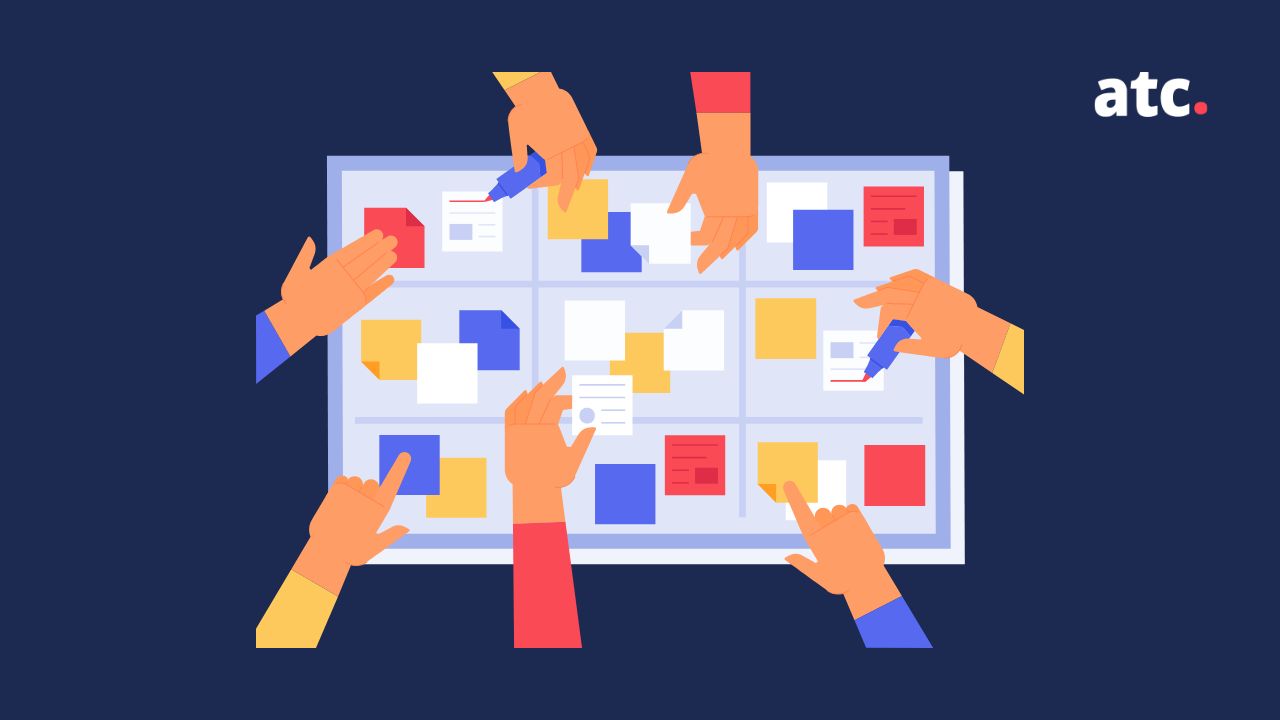Subscribe to the blog
What is Lean Methodology?
Lean methodology is one of the most popular concepts in the modern era found in business organizations. When it comes to providing greater value to the customers, it helps reduce organizational waste and improves efficiency. In other words, a Lean methodology is a philosophical approach to conducting business that provides a broader applicability to the varied function of an organization, irrespective of its size or sector. With this broad applicability, organizations can achieve their business goals innovatively and sustainably. In addition to this, a Lean management empowers business organizations to optimize their overall value stream that helps attain the organization’s vision and reduce time incurred in the value-delivery cycle. Overall, Lean methodology improves organizational speed and ability, which in turn increase the quality of the production processes, improve delivery practices, and enhance the overall customer value-delivery experience.
It must be noted that Lean methodology is not limited to reducing organizational waste and increasing the efficiency of the production process. It also ensures continuous improvement of functional aspects of the organization and the creation of usable organizational knowledge for future application. With adequate and effective implementation of Lean methodology, the employees are provided with the practical knowledge required for performing their jobs in a better way and availed with a greater sense of coordination for effective cross-departmental collaboration. Thus, it can be stated that Lean methodology provides an efficient managerial framework for improving the overall functionality of the organization. Leaders and managers worldwide have been adopting Lean Methodology while formulating strategies, making decisions, and executing plans to improve revenue generation and robustly attaining the organization’s aims.
The concept of Lean methodology was introduced with the Toyota Production System and has been revolutionizing the manufacturing processes of physical goods since the 1950s. At present, Lean methodology is not limited to just manufacturing as newer applications have opened up multiple new avenues, such as in knowledge development, waste management, process improvement, and innovation for numerous managerial and functional aspects of business organizations, irrespective of the sector, size, or location. However, the application of Lean methodology in knowledge development varies greatly from its application in the manufacturing processes. The key example of the same is that value generated in the form of knowledge can exist among employees' working styles but it cannot be generically employed in the assembly line due to the prevailing differences in employees’ thought processes and perspectives. Due to this, applying knowledge of Lean methodology in the production process can be challenging but can also generate ample opportunities for innovation. Overall, Lean methodology helps business organizations attain tremendous success productively and innovatively.
Principles of Lean Methodology
The key principles of Lean methodology that help organizations improve overall efficiency are as follows:
- Identify Value: This principle of Lean methodology is concerned with identifying the needs and requirements of the customers so that necessary changes can be made in organizational processes and practices. It is highly significant for the managerial personnel to evaluate the actual needs of the customers as organizational profitability and sustainability depend on it. In this regard, customers can be interviewed to understand their needs and requirements. Identifying the value of products and services created for customers is essential in introducing novel products and services so that necessary changes can be made in the initial stages. Also, since customers may not articulate their expectations well enough under general circumstances, it should be the responsibility of the management to develop a general idea with the information that is available. Following this, strategies and plans must be formulated and then executed accordingly. It is also essential that managerial personnel take necessary actions to keep the customers engaged, ensuring that customer expectations are fulfilled in the best possible way.
- Mapping of the value stream: After these needs have been identified, they should be taken as the reference point and all processes should be altered accordingly. This will help the organization ensure a smooth and robust flow in the value stream. With the appropriate mapping of the overall value stream, the managerial personnel will be able to identify and eliminate areas of inefficiencies. This will help ensure that their teams work in synchronization to provide the best value to the customers, save organizational resources, and maximize profits.
- Creation of an efficient flow: Once these wasteful and inefficient factors are removed using Lean Methodology practices, a better workflow can be created to ensure smooth implementation and execution of every strategy. The managerial personnel is now better prepared to achieve organizational aims and objectives. In this regard, the entire process should be developed into independent units in the form of deliverables and milestones. However, the deliverables and milestones should be arranged and attained sequentially to ensure that the process is completed on time with minimum cost and maximum profit. Additionally, it is essential to take necessary actions to avoid project bottlenecks and delays, ensuring that every event or process in the value stream takes place without any issues and is availed with necessary resources whenever required.
- Establishment of Pull: Maintaining an inventory of all the essential resources for any process is highly important. The managerial personnel can save on the waiting time for resources and materials to arrive after completion of each milestone and deliverable. However, it must be noted that maintaining excess inventory can also increase incurred costs and lead to more waste generation. Therefore, it is essential to proactively plan the resources and materials that are essential to all deliverables. Proactive planning establishes a pull in the overall organizational functionality, ensuring no resource or material is used by any other process. This allows the managerial personnel to ensure that the cost of maintaining inventory is reduced significantly. The establishment of pull work on the “just in time” approach also mitigates the limitations of the traditional method, which depends heavily on forecasts and preapproved schedules.
- Attainment of continuous improvement: This principle of Lean methodology is concerned with the uncompromising and consistent pursuit of perfection. The principle suggests that improvement should be iterative and that the managerial personnel should learn from every shortcoming. With this approach, not only can the organizational functionality be improved, but it is also ensured that similar shortcomings do not occur multiple times. Overall, this principle helps ensure that the workforce always performs better than present in the future.
Lean-Agile Methodology
Lean-Agile methodology promotes a development method that helps workforces identify waste and refine materials. In other words, a Lean-Agile method is a guiding approach that provides efficiency, effectiveness, and consistent improvement to business organizations. The concept of Lean-Agile has emerged from principles of Lean methodology. This approach helps organizations improve their profit volume by reducing costs rather than relying on sales volume. The methodology believes that organizations can be more efficient, save on incurred costs, and increase overall profit by eliminating the waste of its materials.
The lean-Agile methodology is fundamental and simple as it focuses on improving organizational efficiency by eliminating waste. Unlike the traditional waste management approach, this method focuses on a strategy that ensures efficient use of all resources to minimize waste and educates every employee involved with specific processes to work in an optimized manner. Lean-Agile has a high level of flexibility, owing to which it can work with different sorts of Agile approaches and software development methods. In addition, Lean-Agile provides transparent application of scaling Agile practices that are generally considered difficult to apply to large organizations.
The key benefits of the lean-agile methodology are as follows:
- Ensures to reduce waste of time: Often, time is considered wasted when organizational processes do not complete on time or have a smooth transition. However, with the help of Lean-Agile methodology, organizations tend to ensure quick and effective delivery of commodities and services. Time is an asset for organizations. Thus, it is essential that they proactively develop and deploy Lean-Agile methodology that ensures that employee’s or manager’s time is not wasted while performing their duties, along with ensuring higher quality in shorter lead times. A small delay in completing the process can negatively affect organizational workflow. The Lean-Agile methodology also helps developmental teams use time management practices efficiently by ensuring every employee is utilized to their full potential.
- Ensures reduction of incurred costs: By eliminating waste, business organizations reduce incurred costs and Lean-Agile helps them achieve this by ensuring the use of the right amount of materials, employees, and working hours to complete every process. On the other hand, organizations subjected to overproduction, excessive inventory storage, and unwanted hiring often incur waste in their organizational systems and functional processes. Regardless of its sector, location, and size, any organization wants to save on cost without compromising efficiency. The Lean-Agile methodology ensures the same by eliminating waste and fine-tuning every process for efficiency.
- Ensures quality improvement: Efficiency is not obtained just for a single process but instead across all organizational processes. The method also provides the best possible value and quality to the customers. Using Lean-Agile methodology, business processes consistently improve as they are made to stay competitive by ensuring every process is evaluated by the value it provides to the customer, quality of the product or services, and level of expectations or requirements it meets.
Lean Development Methodology
Lean Development methodology helps organizations source necessary information by eliminating the common issue of producing products or services that do not address the customers' needs, requirements, and expectations. Shorter iterations used by Lean Development help organizations efficiently communicate with customers, so that a narrower set of executable plans can be developed. This ensures that employees have the opportunity, resources, and time to make necessary decisions which not only helps in the development of products and services as per customer’s requirements and expectation but also provides necessary support in tackling unforeseen circumstances. This methodology allows the organization to gain and deploy the ability to complete its processes quickly by making simple improvements that provide robust decision-making benefits over a short period.
Lean Development methodology works with concepts of waste elimination, amplification of learning, real-time decision making, quick value delivery, developing built-in integration, employee empowerment, and reviewing all the organizational processes as a whole. Under Lean Development, the term waste refers to constraints that can reduce the quality of materials, services, or overall process, hinder efforts, or incur time or reduced value of deliverables. These factors lead to delays in process completion, lack of clarity in requirements, execution of unnecessary processes, and insufficient quality evaluation. However, with the help of Lean Development, organizations can mitigate such negative factors and develop a sound understanding of the requirements.
Waste Management by Lean Methodology
As stated above, one of the key principles of Lean methodology concerns the removal of waste from the organizational processes as it tends to negatively impact the organization’s profitability. The Lean methodology works on the belief that waste can incur in the form of time, labor, and material. However, with efficient use of employees’ skills and effective formulation of strategies, waste can be completely eliminated. As per Lean methodology, waste refers to any expense of efforts that does not transform raw material into desired products and services for the customers. In this context, Lean methodology focuses on optimizing every process for eliminating waste in such a way that only true value is added to each phase of production.
Managing and reducing waste is one of the best methods of increasing the efficiency of production processes and attaining greater profitability volume. In this regard, it is important that production processes be designed and conducted in a way that they either add value to the overall quality of goods and services and ensure minimal waste. There are seven sorts of wastes under Lean methodology, and it is essential to understand the types and impacts of waste before they can be eliminated.
The seven types of wastes are overproduction, waiting, transporting, over-processing, unnecessary inventory, excess motion, and defects. However, in the modern era, an eighth type of waste has been added—the underutilization of manpower, which causes multiple issues and is highly evident in physical production. Inappropriate use of brainpower, experience, and skills of the employees are all included under this type of waste.
By eliminating all eight types of waste, Lean methodology not only increases the efficiency of the production process but also makes it highly transparent and easy to conduct. In this regard, business organizations can take help from many software programs and solutions developed using Lean methodology. In the modern era, Lean methodology supports solutions comprising cloud computing, machine learning, and deep analytics, all of which conjure all organizational equipment in such a way that they can leverage hidden efficiency into improving functionality and efficiency. The production processes that are integrated with Lean methodology tend to work for the attainment of specific goals with the application of its core principles. Similarly, Lean methodology also helps managerial personnel in ensuring that the production processes are working on schedule, without any waste or delay that can negatively affect organizational profitability.




